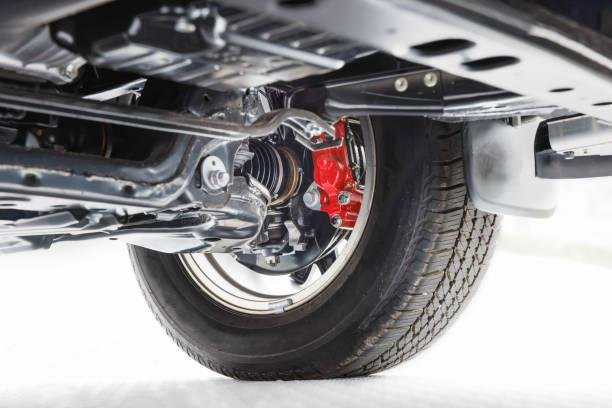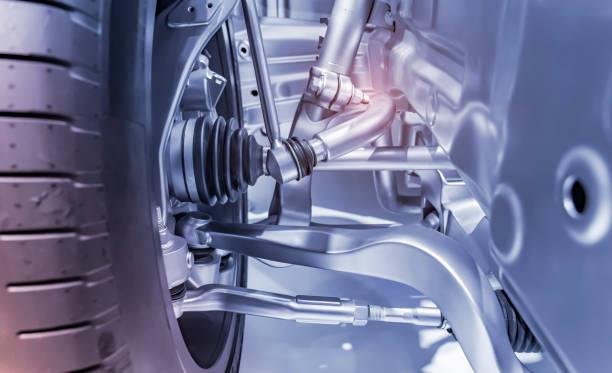Lower control arm bushings are critical components of a vehicle’s suspension system, providing stability, control, and vibration dampening to ensure a smooth and comfortable ride. Located between the lower control arm and the vehicle’s frame or subframe, these bushings act as a cushioning interface that absorbs road shocks and vibrations, while allowing for controlled movement and articulation of the suspension components. In this comprehensive guide, we’ll explore the importance of lower control arm bushings, their function within the suspension system, signs of bushing wear and failure, replacement considerations, and the impact of worn bushings on vehicle performance and safety.
Understanding Lower Control Arm Bushings
Lower control arm bushings, also known as control arm bushings or A-arm bushings, are rubber or polyurethane components that provide a flexible connection between the lower control arm and the vehicle’s chassis. Their primary function is to isolate the vibrations and impacts from the road surface, preventing them from being transmitted directly to the vehicle’s frame and occupants. Additionally, lower control arm bushing allows for controlled movement and articulation of the suspension components during cornering, braking, and acceleration, maintaining stability and control of the vehicle.
The function of Lower Control Arm Bushings
- Vibration Dampening: Lower control arm bushings absorb and dampen the vibrations and impacts encountered while driving on uneven road surfaces, potholes, and bumps. By cushioning the shocks transmitted through the suspension system, bushings help maintain a smooth and comfortable ride for vehicle occupants.
- Noise Reduction: In addition to absorbing vibrations, lower control arm bushings help reduce noise and harshness transmitted from the road to the vehicle’s interior. By acting as a barrier between the metal components of the suspension system, bushings minimize rattling, squeaking, and clunking noises, enhancing overall cabin comfort.
- Alignment Stability: Lower control arm bushings play a crucial role in maintaining proper wheel alignment and suspension geometry. By securely mounting the lower control arm to the vehicle’s chassis, bushings ensure that the wheels remain in their correct position relative to the vehicle’s frame, optimizing handling, steering response, and tyre wear.
- Load Distribution: During cornering, braking, and acceleration, lower control arm bushings help distribute the vehicle’s weight and forces evenly across the suspension components. This promotes balanced handling characteristics and prevents premature wear and fatigue of suspension components.
Signs of Lower Control Arm Bushing Wear and Failure
- Excessive Vibration: Worn or deteriorated lower control arm bushings may result in increased vibration and harshness felt through the vehicle’s steering wheel, floorboards, or chassis, especially when driving over rough or uneven road surfaces.
- Loose Steering: Bushing wear can cause excessive play or looseness in the vehicle’s steering, resulting in reduced responsiveness and precision when turning the steering wheel. This can lead to a vague or wandering steering feel and compromised vehicle control.
- Clunking or Knocking Noise: Damaged or worn lower control arm bushings may produce audible clunking, knocking, or thudding noises when driving over bumps, during cornering, or under heavy braking. These noises indicate excessive movement or play in the suspension components.
- Uneven tyre wear: Misaligned or worn lower control arm bushings can cause uneven tyre wear patterns, such as cupping, scalloping, or feathering, on the vehicle’s tyres. This is often accompanied by increased tyre noise and reduced traction, compromising driving safety and performance.
- Visible Bushing Damage: Inspecting the lower control arm bushings for visible signs of damage, such as cracks, tears, or deformation, can help identify wear or deterioration. Bushings that appear cracked, split, or distorted should be replaced promptly to prevent further damage to the suspension system.
Replacement Considerations
- Bushings Material: When replacing lower control arm bushings, consider the material composition and durability of the new bushings. OEM-quality rubber bushings offer a balance of comfort and longevity, while polyurethane bushings provide improved performance and durability but may result in increased noise and harshness.
- Bushings Design: Choose bushings that are designed to withstand the specific load and forces encountered during normal driving conditions. Reinforced or upgraded bushings may be available for vehicles subjected to heavy-duty use, towing, or performance driving.
- Professional Installation: While replacing lower control arm bushings can be a DIY project for experienced automotive enthusiasts, it’s recommended to seek professional installation from a qualified technician. Proper installation ensures that bushings are correctly aligned, seated, and torqued to manufacturer specifications.
- Alignment Check: Following the lower control arm bushing replacement, it’s essential to perform a wheel alignment check to verify proper suspension geometry and alignment settings. This ensures optimal handling, steering response, and tyre wear.
Impact of Worn Bushings on Vehicle Performance and Safety
- Handling and Stability: Worn or deteriorated lower control arm bushings can compromise vehicle handling and stability, leading to unpredictable steering behaviour, excessive body roll, and reduced cornering grip. This affects driving safety and increases the risk of accidents and collisions.
- Steering Precision: Damaged or loose lower control arm bushings can result in imprecise steering response and reduced steering feedback, making it challenging to maintain control of the vehicle, especially during emergency manoeuvres or evasive actions.
- Suspension Wear: Worn lower control arm bushings can accelerate the wear and fatigue of other suspension components, including ball joints, tie rod ends, and sway bar links. This increases the likelihood of premature component failure and necessitates costly repairs or replacements.
- Tyre Wear and Alignment Issues: Misaligned or worn lower control arm bushings can cause uneven tyre wear patterns and premature tire failure. This compromises tyre traction, reduces fuel efficiency, and increases the risk of tyre blowouts and loss of vehicle control.
Conclusion
Lower control arm bushings are integral components of a vehicle’s suspension system, providing stability, control, and vibration dampening to ensure a smooth and comfortable ride. By understanding the importance of lower control arm bushings, recognizing the signs of wear and failure, and prioritizing regular inspection and maintenance, drivers can maximize vehicle performance, safety, and longevity. Whether you’re experiencing symptoms of bushing wear or due for routine maintenance, scheduling a comprehensive inspection and replacement of worn bushings is essential for maintaining optimal suspension performance and driving safety. So why wait? Invest in lower control arm bushing services today and enjoy a smoother, safer, and more enjoyable driving experience for miles to come.

















